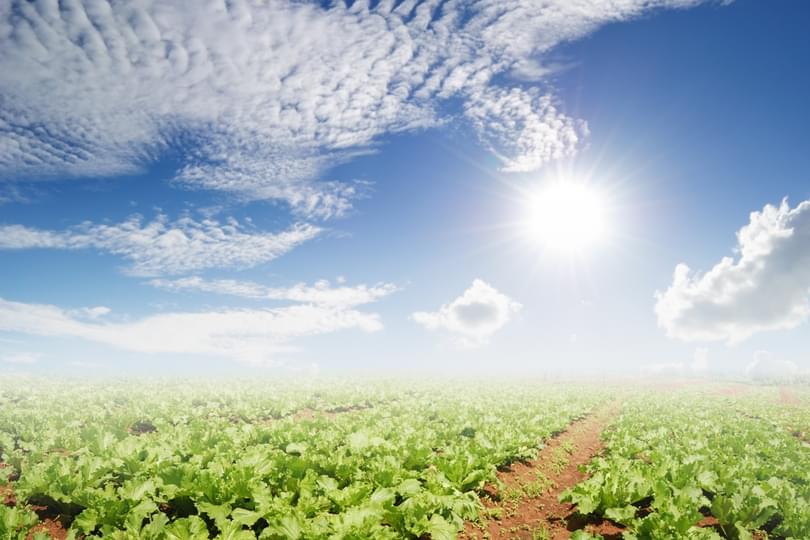
Organic farming is a trade off: it prohibits the use of certain chemicals and inorganic fertilisers, which usually results in lower yields, and hence higher prices. With arguments about health benefits inconclusive, one might ask what reasons there are to pay the organic premium.
One reason may be in organic farming’s effects, not on us, but on the environment. In our study published in the Journal of Applied Ecology, we re-analysed data collected on biodiversity, one potential environmental benefit of organic farming. We looked at data from 94 previous studies dating back to 1989 covering 184 farms with different crops, in which biodiversity on conventional and organic farms was compared. This was measured in terms of species richness (the number of different species in a particular area or time) rather than the number of individuals.
Our meta-analysis of all the results from similar studies weighted them according to their sample size and reliability. It revealed clearly measurable benefits: organic fields and farms typically contain on average between 26%-42% more species than fields managed using conventional methods. With respect to pollinators such as bees, it was up to 50% more.
However, the magnitude of the effect varies between different types of organism, and between fields growing different crops. Incidental plants, those not being grown as crops, seem to benefit the most from organic farming, while the largest differences in diversity between conventional and organic is seen in areas of intensive cultivation of cereal crops such as wheat, maize and barley. So consumers who choose to buy organic food can be sure they are paying towards a method that generates an environmental benefit.
One of the criticisms often levelled at organic farming is that while there are benefits to biodiversity, lower yields mean more land is required to grow the same amount of food. But it’s precisely those reduced yields that provide the benefits to other organisms: those crop calories that don’t end up in human mouths probably end up in the mouths of other mammals, insects and birds.
So is organic farming a zero-sum game? This is a much harder problem to address, and there probably isn’t a simple answer. For example, in Europe arable farming has a very long history, and many of our treasured and familiar species such as turtle-doves and corncrakes can thrive in extensively managed farmland.
But many of these species are now threatened: there have been spectacular declines in formerly common birds such as skylarks, turtle-doves and grey partridges, as shown in the RSPB State of the UK’s Birds Report, which tracks bird numbers since the 1990s. Organic farming has been shown to maintain species diversity on farmland, so it probably does provide one solution to these declines, in Europe at least.
But in the tropics, the situation may be different. A meta-analysis of published studies such as ours can only work with the literature available. When we also compared the area of organic crops in which studies had taken place to the actual area under agricultural production worldwide, we found a startling mismatch: three-quarters of the studies that compared organic to conventional methods were carried out in Europe, while three-quarters of the land under organic production is outside Europe.
This means that the biodiversity benefits, or otherwise, to many familiar tropical crops such as bananas or cacao beans, simply haven’t been assessed. Of course we would expect to see benefits, given the strength and consistency of results in Europe. But the fact that organic crops may need more land is potentially a bigger problem in the tropics, given that new farmland comes at the expense of clearing natural habitats. This makes the trade-offs between yield and biodiversity even more important and this should be the focus of further research.
A new aspect to our study was to use maps obtained from Google Earth to quantify land use in the areas surrounding the study farms. Although such estimates can only ever be crude, our study revealed that organic farming had greater benefits in areas with high land-use intensity.
This is probably because the biodiversity on conventional farms in such areas is correspondingly lower. In which case perhaps we should deliberately encourage the scattering of organic farms around the landscape to maximise their impact. Or alternatively, group them together in conservation areas complete with footpaths and other amenities in order to maximise the enjoyment and benefits they can offer the public – perhaps it’s a point that should go out for public consultation.
But even now efforts are being made to improve the natural biodiversity of conventional farmland, such as through the European Common Agricultural Policy’s new “greening” measures that came into force in January. These recognise the disastrous effect intensive agriculture has had on biodiversity, and acknowledge the current failure to prevent further losses.
Compared to the effects of organic farming, the evidence that greening measures which encourage strips of wild habitat, fallow land, forests or hedgerows, and wider crop diversity provides biodiversity benefits is variable. Much will depend on the way they are interpreted and implemented farm by farm. Given the current state of farmland and the limited spread of organically farmed land, we can only hope they’re successful.
Dr LindsayTurnbull is Associate Professor & Tutorial Fellow, Queen’s College, and a member of the Oxford Martin Programme on the Future of Food. Her research interests focus on how and why plant species differ from one another and what the consequences
This article was originally published on The Conversation.
This opinion piece reflects the views of the author, and does not necessarily reflect the position of the Oxford Martin School or the University of Oxford. Any errors or omissions are those of the author.